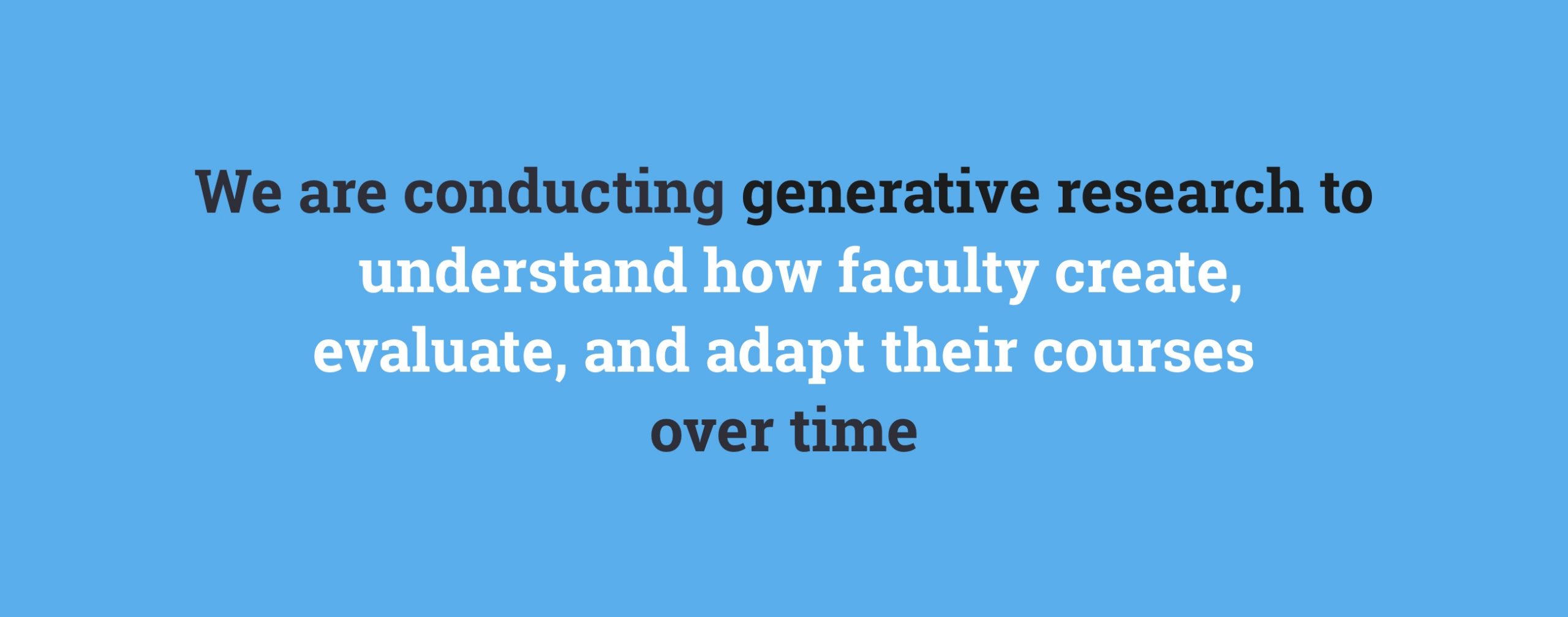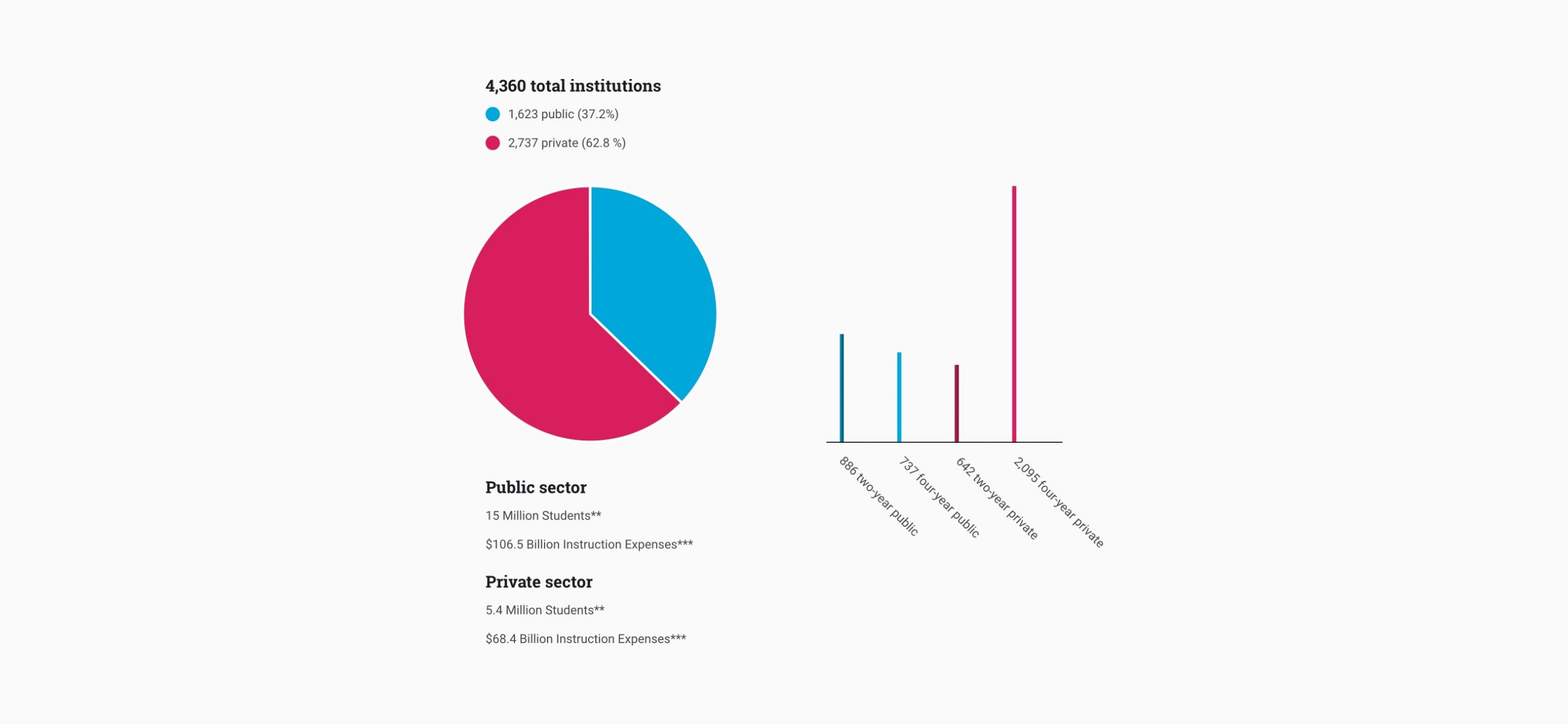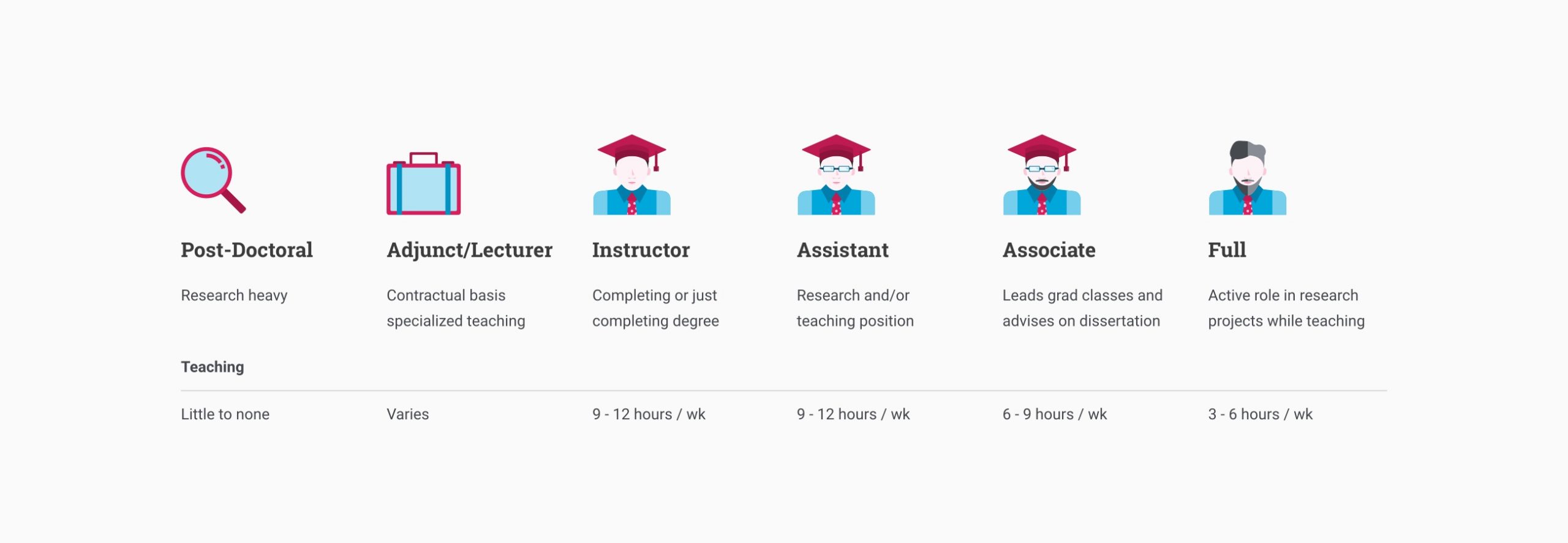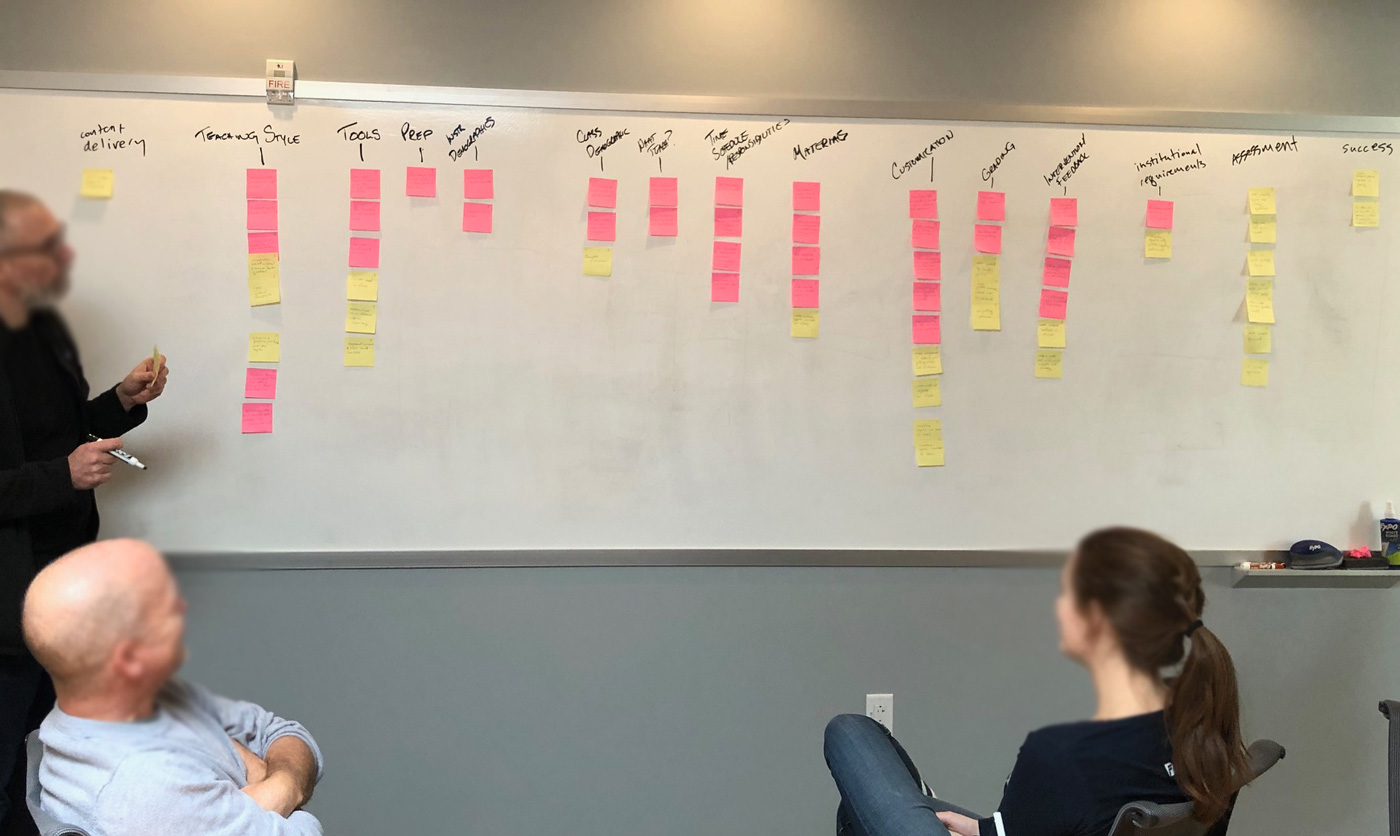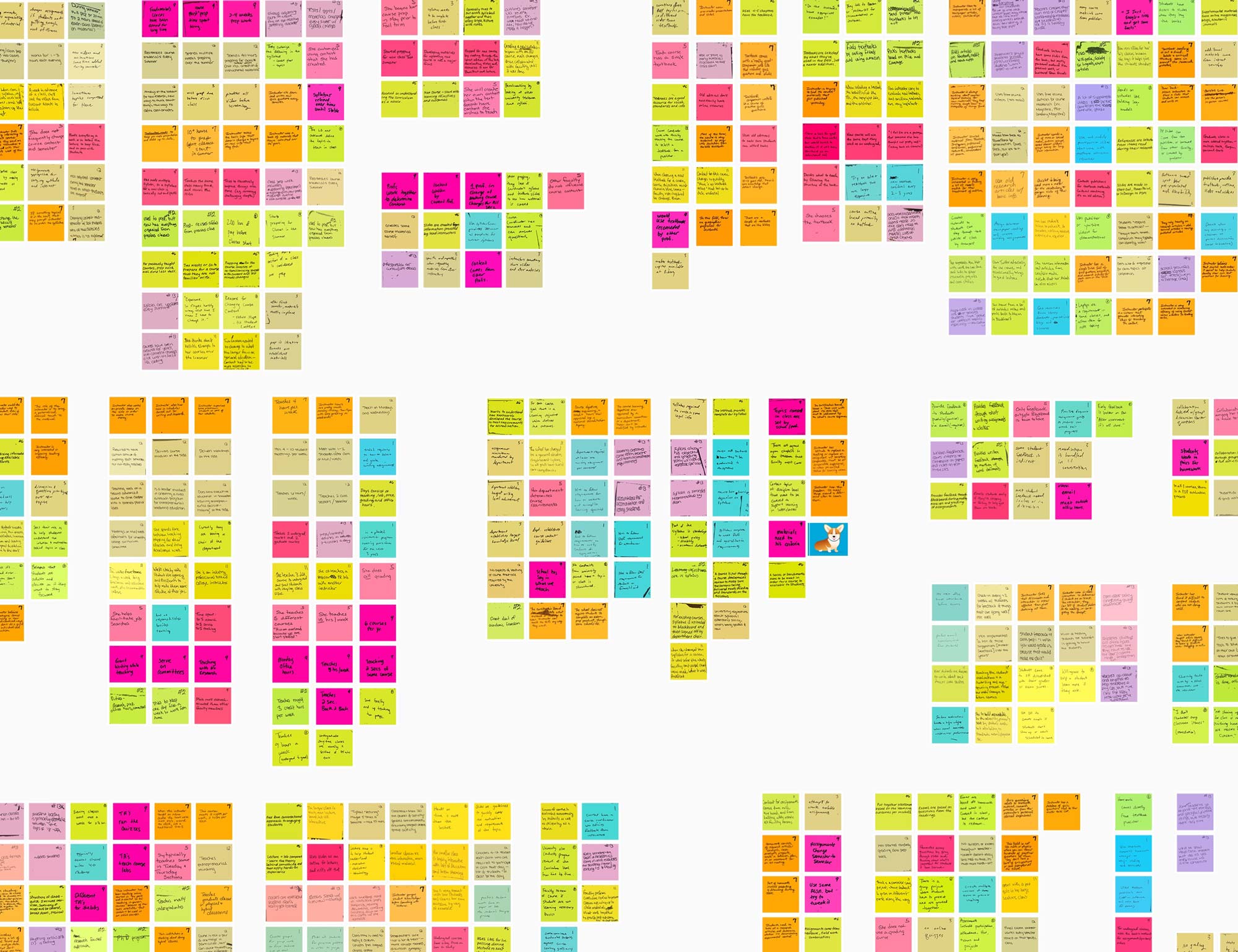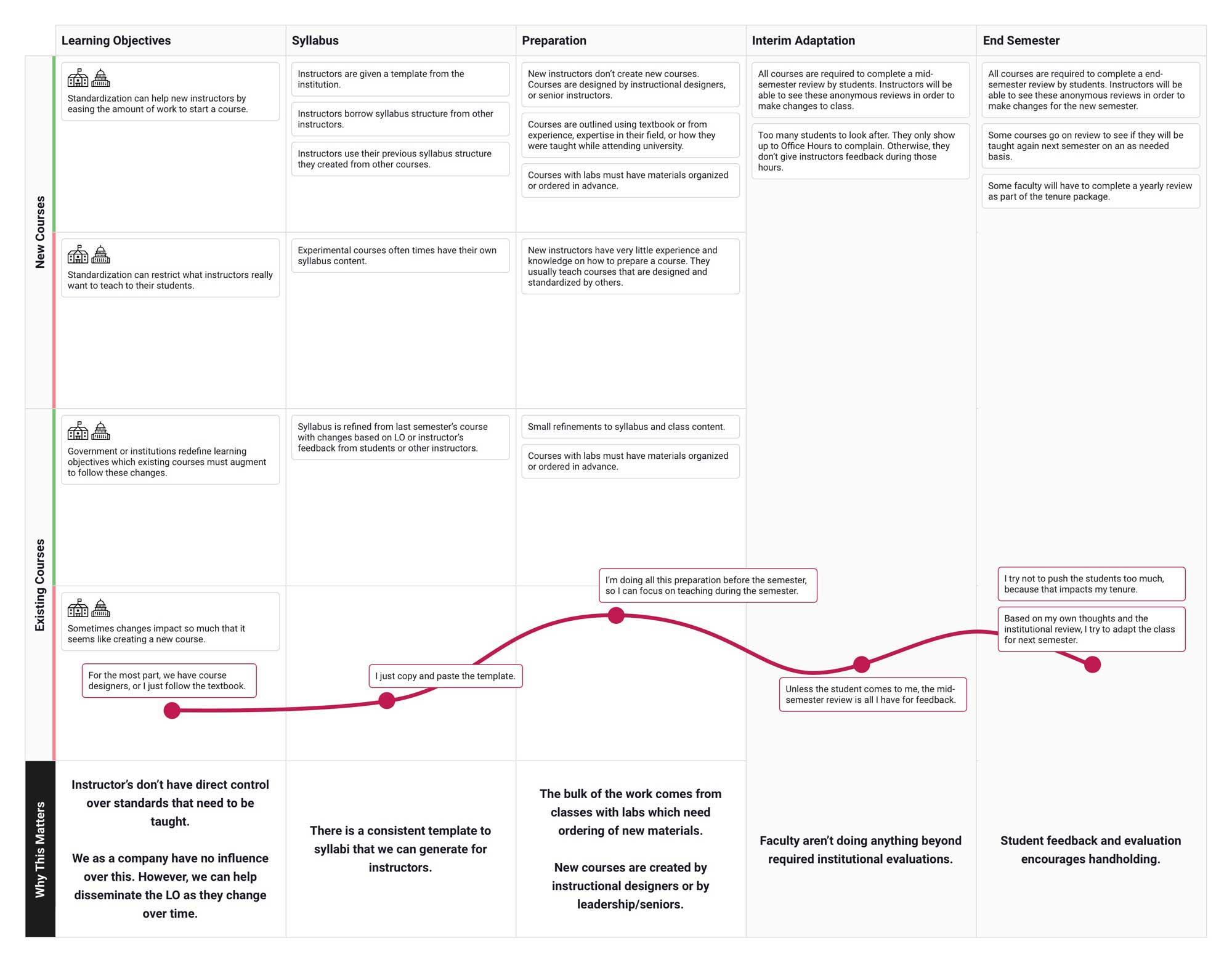Secondary Research - 1 week
Conduct online researching to further understand the landscape of instructors in 2019. Part of the research involves looking at various tools used by instructors and conducting informal netnography research by joining instructor online communities and forums.
Screener Surveys - 1 week
Development of screener surveys and testing them to make sure we are collecting diversified data.
Interviews - 4 weeks
Schedule interviews on Calendly for both onsite and remote locations.
Synthesis and Artifacts - 1 week
Synthesize research and create artifacts to guide product decisions.




